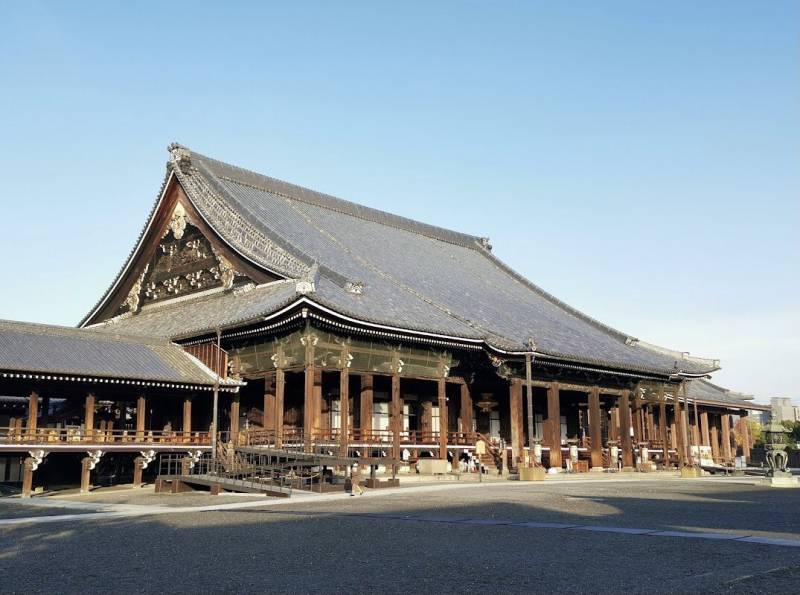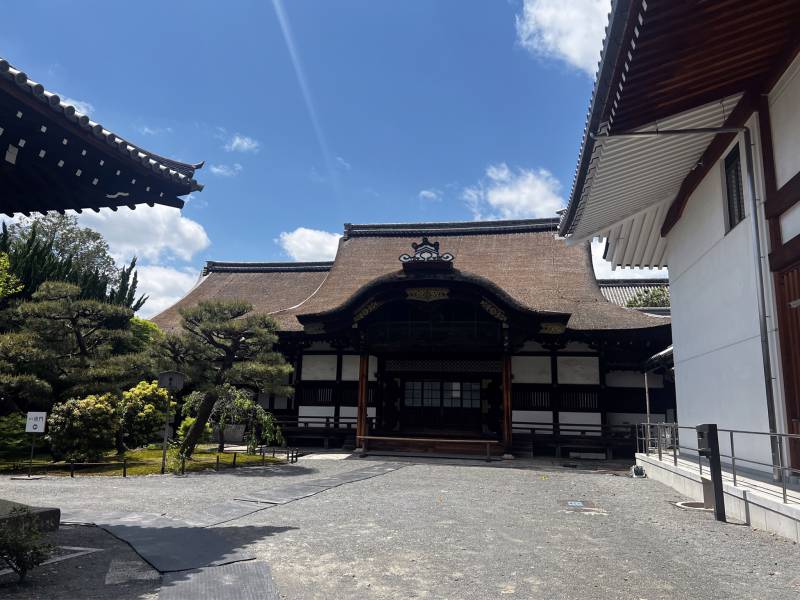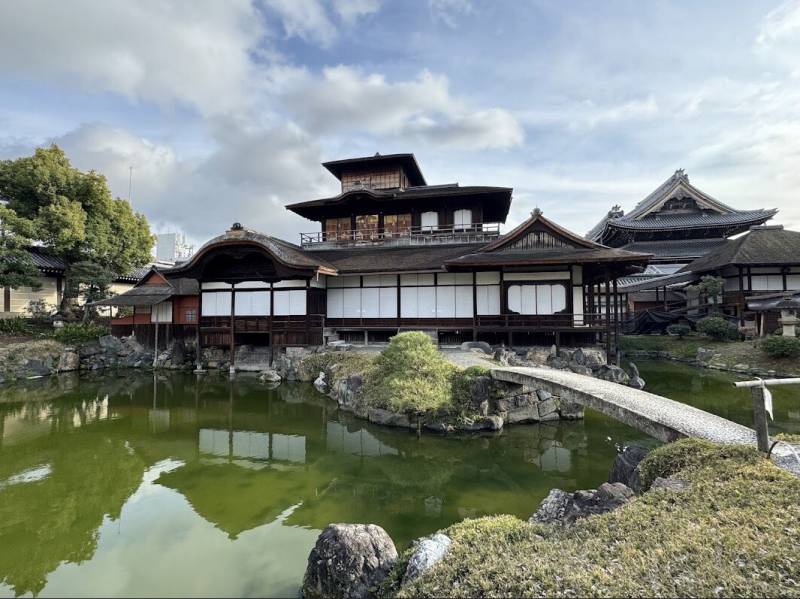2024.05.06
Blog
Nishi Hongan-ji
Hello!
This is Huong.
This time I would lite to intrioduce the Nishi Hongan-ji.
Foreign tourists may be unfamiliar with this historic and huge temple.
This is because this place is rarely included on regular vacations.
This is Huong.
This time I would lite to intrioduce the Nishi Hongan-ji.
Foreign tourists may be unfamiliar with this historic and huge temple.
This is because this place is rarely included on regular vacations.

Hongan-ji Temple is the head temple of the Jodo Shinshu.
Hongan-ji sect, also known as Onishi-san.
Honganji Temple was founded in its current position at the end of the 16th century,
and it has various national treasures such as Goeido, Amida-do, Karamon, and Hiunkaku.
The entry gate is open from 9 a.m. to 5 p.m. and offers free tours.
Hongan-ji sect, also known as Onishi-san.
Honganji Temple was founded in its current position at the end of the 16th century,
and it has various national treasures such as Goeido, Amida-do, Karamon, and Hiunkaku.
The entry gate is open from 9 a.m. to 5 p.m. and offers free tours.

Karamon
The Nishi Honganji Temple houses a national heritage edifice that represents Momoyama culture.
Chokushimon is a four-legged gate that faces Kitakoji Street. It's also known as ''Higurashi Gate.
The Nishi Honganji Temple houses a national heritage edifice that represents Momoyama culture.
Chokushimon is a four-legged gate that faces Kitakoji Street. It's also known as ''Higurashi Gate.
Northern Noh stage.
The Northern Noh Stage is located on the north bank of the Shoin.
Normally closed to the public. It is Japan's oldest Noh stage, with an ink inscription from 1581.
The Northern Noh Stage is located on the north bank of the Shoin.
Normally closed to the public. It is Japan's oldest Noh stage, with an ink inscription from 1581.

Large ginkgo
Nishi Honganji Temple's grounds have a male Ginkgo biloba tree.
The land is straight, and a stone wall surrounds the embankment's outer ring, which is around 30 cm wide.
The ginkgo tree has a unique form, with strong horizontal or diagonal branches rising in all directions from 1.5 m to 3 m above the ground.
It is also known as the upside-down ginkgo tree.
If possible, come in the winter, in December.
You can see The leaves have turned a bright yellow.
Nishi Honganji Temple's grounds have a male Ginkgo biloba tree.
The land is straight, and a stone wall surrounds the embankment's outer ring, which is around 30 cm wide.
The ginkgo tree has a unique form, with strong horizontal or diagonal branches rising in all directions from 1.5 m to 3 m above the ground.
It is also known as the upside-down ginkgo tree.
If possible, come in the winter, in December.
You can see The leaves have turned a bright yellow.
If you visit Kyoto, be sure to stop by.
This temple offers both historic and unusual architecture,
as well as a quiet and peaceful environment.
This temple offers both historic and unusual architecture,
as well as a quiet and peaceful environment.














